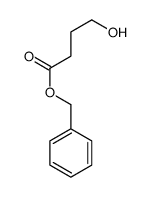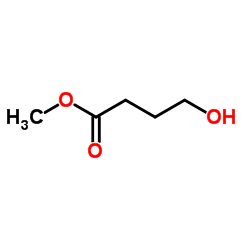502-85-2
| 中文名 | 4-羟基丁酸钠 |
|---|---|
| 英文名 | .γ.-Hydroxybutyric acid monosodium salt |
| 中文别名 | 羟丁酸钠 |
| 英文别名 |
GHB
Sodium 4-hydroxybutanoate Xyrem 4-Hydroxybutyrate sodium Butanoic acid, 4-hydroxy-, sodium salt (1:1) Sodium Oxybate GHB SODIUM SALT Butanoic acid, 4-hydroxy-, monosodium salt Butanoic acid, 4-hydroxy-, sodium salt gammaoh MFCD00004402 γ-OH SODIUM 4-HYDROXYBUTYRATE γ-Hydroxybutyrate sodium wy-3478 4-Hydroxybutanoic Acid Monosodium Salt 4-Hydroxybutyric acid monosodium salt Sodium γ-hydroxybutyrate Butyric acid, 4-hydroxy-, monosodium salt (8CI) somsanit γ-Hydroxybutyric acid monosodium salt Butyric acid, 4-hydroxy-, sodium salt Butyric acid, 4-hydroxy-, monosodium salt Sodium Oxybate [USAN] 4-Hydroxybutyric acid sodium salt EINECS 207-953-3 |
| 沸点 | 295.6ºC at 760mmHg |
|---|---|
| 熔点 | 145-146ºC |
| 分子式 | C4H8NaO3+ |
| 分子量 | 126.086 |
| 闪点 | 146.8ºC |
| 精确质量 | 126.029289 |
| PSA | 57.53000 |
| 储存条件 | Controlled Substance, -20?C Freezer |
Synonym:Sodium Oxybat Section 2 - COMPOSITION, INFORMATION ON INGREDIENTS
Risk Phrases: None Listed. Section 3 - HAZARDS IDENTIFICATION EMERGENCY OVERVIEW
Not available. Potential Health Effects Eye: No information regarding eye irritation and other potential effects was found. Skin: No information regarding skin irritation and other potential effects was found. Ingestion: Ingestion of large amounts may cause gastrointestinal irritation. Inhalation: Inhalation of dust may cause respiratory tract irritation. Chronic: Not available. Section 4 - FIRST AID MEASURES Eyes: Flush eyes with plenty of water for at least 15 minutes, occasionally lifting the upper and lower eyelids. Get medical aid immediately. Skin: Get medical aid immediately. Flush skin with plenty of water for at least 15 minutes while removing contaminated clothing and shoes. Ingestion: If victim is conscious and alert, give 2-4 cupfuls of milk or water. Never give anything by mouth to an unconscious person. Get medical aid immediately. Inhalation: Get medical aid immediately. Remove from exposure and move to fresh air immediately. If not breathing, give artificial respiration. If breathing is difficult, give oxygen. Notes to Physician: Section 5 - FIRE FIGHTING MEASURES General Information: As in any fire, wear a self-contained breathing apparatus in pressure-demand, MSHA/NIOSH (approved or equivalent), and full protective gear. Extinguishing Media: Use water fog, dry chemical, carbon dioxide, or regular foam. Section 6 - ACCIDENTAL RELEASE MEASURES General Information: Use proper personal protective equipment as indicated in Section 8. Spills/Leaks: Sweep up or absorb material, then place into a suitable clean, dry, closed container for disposal. Section 7 - HANDLING and STORAGE Handling: Wash thoroughly after handling. Use only in a well-ventilated area. Avoid contact with eyes, skin, and clothing. Avoid ingestion and inhalation. Storage: Store in a cool, dry place. Keep container closed when not in use. Section 8 - EXPOSURE CONTROLS, PERSONAL PROTECTION Engineering Controls: Use adequate ventilation to keep airborne concentrations low. Exposure Limits CAS# 502-85-2: Personal Protective Equipment Eyes: Wear appropriate protective eyeglasses or chemical safety goggles as described by OSHA's eye and face protection regulations in 29 CFR 1910.133 or European Standard EN166. Skin: Wear appropriate protective gloves to prevent skin exposure. Clothing: Wear appropriate protective clothing to prevent skin exposure. Respirators: Follow the OSHA respirator regulations found in 29 CFR 1910.134 or European Standard EN 149. Use a NIOSH/MSHA or European Standard EN 149 approved respirator if exposure limits are exceeded or if irritation or other symptoms are experienced. Section 9 - PHYSICAL AND CHEMICAL PROPERTIES Physical State: Powder Color: white to off-white Odor: None reported. pH: Not available. Vapor Pressure: Not available. Viscosity: Not available. Boiling Point: @ 760.00mm Hg Freezing/Melting Point: 144 - 148 deg C Autoignition Temperature: Not available. Flash Point: Not available. Explosion Limits, lower: Not available. Explosion Limits, upper: Not available. Decomposition Temperature: Solubility in water: soluble Specific Gravity/Density: Molecular Formula: C4H7O3Na Molecular Weight: 126.09 Section 10 - STABILITY AND REACTIVITY Chemical Stability: Stable under normal temperatures and pressures. Conditions to Avoid: Not available. Incompatibilities with Other Materials: Strong oxidizing agents. Hazardous Decomposition Products: Carbon monoxide, carbon dioxide, sodium oxide. Hazardous Polymerization: Has not been reported. Section 11 - TOXICOLOGICAL INFORMATION RTECS#: CAS# 502-85-2: ET4750000 LD50/LC50: CAS# 502-85-2: Oral, mouse: LD50 = 4250 mg/kg; Oral, rat: LD50 = 9690 mg/kg. Carcinogenicity: 4-Hydroxybutyric Acid, Sodium Salt - Not listed by ACGIH, IARC, or NTP. Other: See actual entry in RTECS for complete information. Section 12 - ECOLOGICAL INFORMATION Section 13 - DISPOSAL CONSIDERATIONS Dispose of in a manner consistent with federal, state, and local regulations. Section 14 - TRANSPORT INFORMATION IATA Not regulated as a hazardous material. IMO Not regulated as a hazardous material. RID/ADR Not regulated as a hazardous material. Section 15 - REGULATORY INFORMATION European/International Regulations European Labeling in Accordance with EC Directives Hazard Symbols: Not available. Risk Phrases: Safety Phrases: S 24/25 Avoid contact with skin and eyes. WGK (Water Danger/Protection) CAS# 502-85-2: No information available. Canada CAS# 502-85-2 is listed on Canada's NDSL List. CAS# 502-85-2 is not listed on Canada's Ingredient Disclosure List. US FEDERAL TSCA CAS# 502-85-2 is listed on the TSCA inventory. SECTION 16 - ADDITIONAL INFORMATION N/A |
CHEMICAL IDENTIFICATION
HEALTH HAZARD DATAACUTE TOXICITY DATA
|
| 符号 |



GHS02, GHS06, GHS08 |
|---|---|
| 信号词 | Danger |
| 危害声明 | H225-H301 + H311 + H331-H370 |
| 警示性声明 | P210-P260-P280-P301 + P310-P311 |
| 危害码 (欧洲) | F,T |
| 风险声明 (欧洲) | 11-23/24/25-39/23/24/25 |
| 安全声明 (欧洲) | S24/25 |
| 危险品运输编码 | UN1230 - class 3 - PG 2 - Methanol, solution |
| WGK德国 | 2 |
| RTECS号 | ET4750000 |
| 海关编码 | 2918199090 |
|
~93% 
502-85-2 |
| 文献:Organic and Biomolecular Chemistry, , vol. 10, # 47 p. 9418 - 9428 |
|
~% 
502-85-2 |
| 文献:Journal of the American Chemical Society, , vol. 52, p. 3702 |
| 上游产品 2 | |
|---|---|
| 下游产品 7 | |
| 海关编码 | 2918199090 |
|---|---|
| 中文概述 | HS: 2918199090. 其他含醇基但不含其他含氧基羧酸(包括其酸酐、酰卤化物、过氧化物和过氧酸及该税号的衍生物). 增值税率:17.0%. 退税率:9.0%. 监管条件:无. 最惠国关税:6.5%. 普通关税:30.0% |
| 申报要素 | 品名, 成分含量, 用途 |
| Summary | 2918199090 other carboxylic acids with alcohol function but without other oxygen function, their anhydrides, halides, peroxides, peroxyacids and their derivatives。Supervision conditions:None。VAT:17.0%。Tax rebate rate:9.0%。MFN tariff:6.5%。General tariff:30.0% |

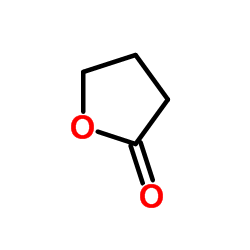
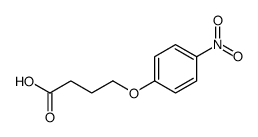
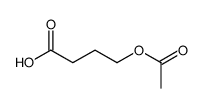


![4-[bis(4-methoxyphenyl)-phenylmethoxy]butanoic acid结构式](https://image.chemsrc.com/caspic/340/150907-74-7.png)
